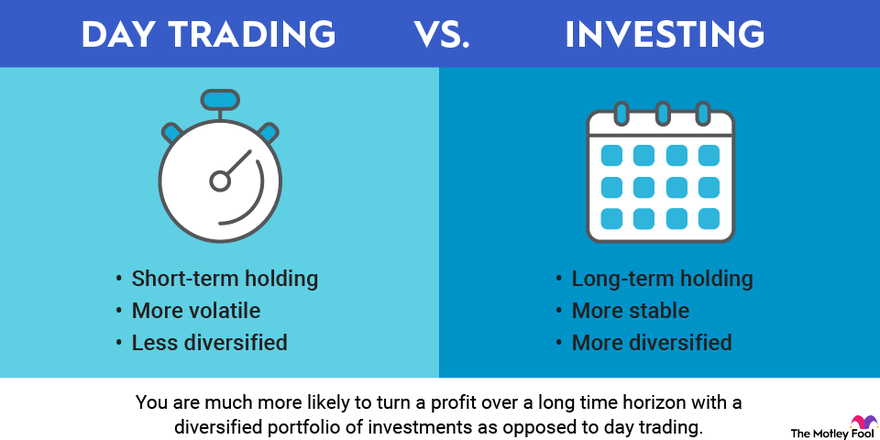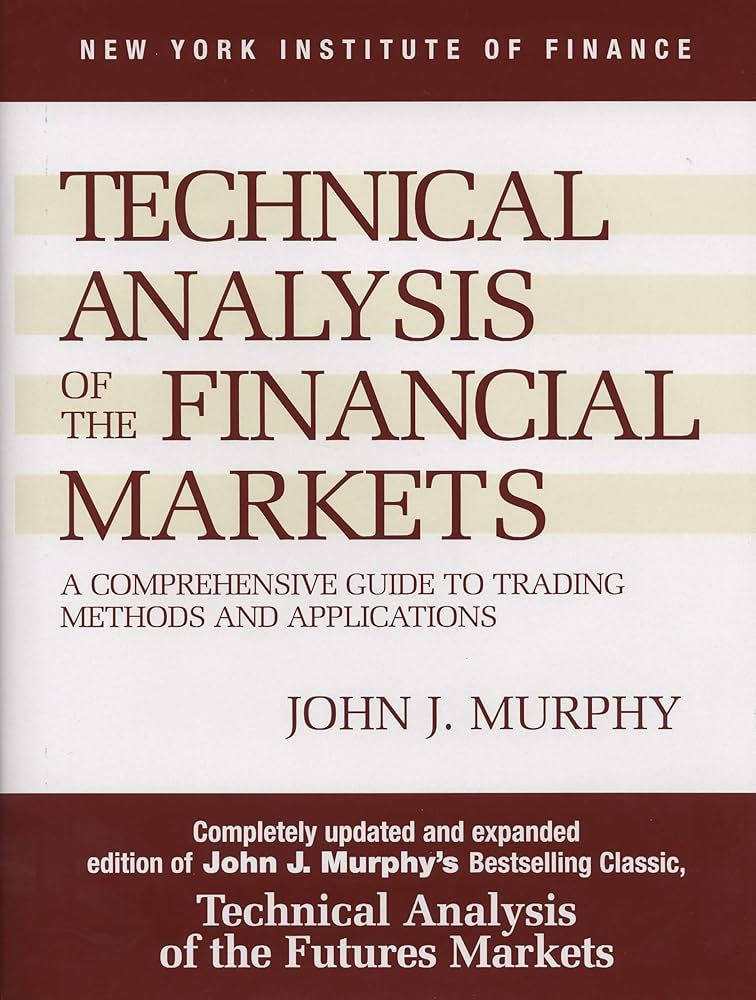Did you know that the average day trader spends more time on charts than a chef spends in the kitchen? In the fast-paced world of day trading futures, beginners need to grasp essential concepts and tools for success. This article covers everything from the basics of day trading futures and getting started to developing effective strategies and managing risks. You'll discover the most popular futures contracts, the importance of technical analysis, and how to avoid common pitfalls. With insights on capital management, realistic goal setting, and educational resources, DayTradingBusiness is here to guide you through your journey in trading futures.
What are the basics of day trading futures for beginners?
Start by understanding the futures market and how it operates. Learn about contracts, margins, and leverage. Develop a solid trading plan that includes your risk tolerance and profit targets. Focus on technical analysis; use charts to identify trends and patterns. Practice with a demo account to gain experience without risking real money. Stay updated on market news and economic indicators that influence prices. Manage your emotions and stick to your strategy, avoiding impulsive decisions. Finally, keep a trading journal to track your performance and learn from your trades.
How do I get started with day trading futures?
To get started with day trading futures, follow these steps:
1. Educate Yourself: Learn about futures markets, trading strategies, and risk management. Use online courses, books, and webinars.
2. Choose a Brokerage: Select a reputable futures broker that offers a user-friendly platform, low fees, and good customer support.
3. Open a Trading Account: Complete the application process and fund your account. Start with a demo account to practice without risking real money.
4. Develop a Trading Plan: your goals, risk tolerance, and trading strategies. Stick to your plan to maintain discipline.
5. Analyze the Market: Use technical and fundamental analysis to identify trading opportunities. Monitor charts, news, and market trends.
6. Start Trading: Begin with small positions to manage risk. Gradually increase your exposure as you gain confidence and experience.
7. Review and Adjust: Regularly evaluate your trades and strategies. Learn from mistakes and adapt your approach as needed.
Focus on continuous learning and stay updated on market conditions to enhance your day trading skills.
What tools do I need for day trading futures?
To day trade futures, you need the following tools:
1. Trading Platform: Choose a reliable platform like Thinkorswim, NinjaTrader, or TradeStation that supports futures trading.
2. Brokerage Account: Open an account with a broker that offers low commissions and access to futures markets.
3. Market Data Feed: Subscribe to real-time market data to stay updated on price movements and trends.
4. Charting Software: Use advanced charting tools like TradingView or MultiCharts for technical analysis.
5. Risk Management Tools: Implement stops and limits to manage risk effectively.
6. News Feed: Stay informed with a news service that provides updates on economic events and market news.
7. Education Resources: Access tutorials, webinars, or books to enhance your trading knowledge.
These tools will help you navigate the futures market effectively.
What are the most popular futures contracts for day trading?
The most popular futures contracts for day trading include Crude Oil (CL), S&P 500 E-mini (ES), Gold (GC), and Corn (ZC). These contracts offer high liquidity, tight spreads, and significant price movement, making them ideal for day traders. Other commonly traded contracts are Natural Gas (NG) and Euro (6E).
How can I develop a day trading strategy for futures?
To develop a day trading strategy for futures, start by defining your goals and risk tolerance. Choose a specific futures market to focus on, such as commodities or indices. Next, analyze historical data to identify patterns and trends.
Incorporate technical analysis using indicators like moving averages or RSI to time your trades. Set clear entry and exit points, along with stop-loss orders to manage risk.
Practice with a demo account to refine your strategy without financial risk. Finally, review and adjust your strategy regularly based on performance and market changes.
What are the risks involved in day trading futures?
Day trading futures involves several risks:
1. Market Volatility: Prices can fluctuate rapidly, leading to significant losses.
2. Leverage: Using margin can amplify both gains and losses, increasing the risk of losing more than your initial investment.
3. Lack of Liquidity: In some markets, you may struggle to enter or exit trades quickly, impacting your ability to manage positions.
4. Emotional Decision-Making: The stress of fast-paced trading can lead to impulsive decisions and mistakes.
5. High Transaction Costs: Frequent trading incurs commissions and fees, which can erode profits.
6. Overtrading: The temptation to make many trades can lead to poor choices and increased risk exposure.
7. Limited Time for Analysis: Quick trades leave little room for thorough research, increasing the chance of errors.
Understanding these risks is crucial for anyone considering day trading futures.
How do I manage my capital when day trading futures?

To manage your capital when day trading futures, follow these steps:
1. Set a Budget: Determine how much capital you're willing to risk and stick to it.
2. Use Stop-Loss Orders: Always set stop-loss orders to limit losses on each trade.
3. Position Sizing: Calculate the appropriate position size based on your risk tolerance. A common rule is to risk no more than 1-2% of your capital on a single trade.
4. Diversify: Avoid putting all your capital into one trade or futures contract; spread it across different trades to mitigate risk.
5. Monitor Leverage: Be cautious with leverage; while it can amplify gains, it can also increase losses.
6. Keep Records: Track your trades to analyze performance and adjust strategies as needed.
7. Stay Disciplined: Stick to your trading plan and avoid emotional decisions.
By following these tips, you can effectively manage your capital while day trading futures.
What is the best time frame for day trading futures?
The best time frame for day trading futures is typically between 1-minute to 15-minute charts. These shorter time frames allow you to capture quick price movements and make multiple trades throughout the day. Many traders prefer the 5-minute chart for a balance of detail and clarity. Adjust your time frame based on your trading style, risk tolerance, and market conditions.
How can I analyze futures markets effectively?
To analyze futures markets effectively, start by focusing on price charts and technical indicators like moving averages and RSI. Study market trends and patterns to identify entry and exit points. Use fundamental analysis to understand supply and demand factors affecting the commodities or assets you're trading. Keep up with economic news, reports, and events that influence market movements. Practice risk management by setting stop-loss orders and defining your risk-reward ratio. Finally, consider using trading simulators to refine your strategies without financial risk.
What role does technical analysis play in day trading futures?

Technical analysis helps day traders in futures by identifying price patterns, trends, and key support and resistance levels. Traders use charts, indicators, and volume analysis to make informed decisions quickly. It aids in timing entries and exits, managing risk, and spotting potential reversals. By analyzing historical price movements, traders can develop strategies that align with market behavior, maximizing their chances of profit.
Learn about Day Trading Futures: A Guide to Technical Analysis
How Can Beginners Effectively Trade Futures in Day Trading?
Futures in day trading are contracts to buy or sell an asset at a predetermined price on a specific date. They allow traders to speculate on price movements of commodities, indices, or currencies without owning the underlying asset. Day trading futures involves opening and closing positions within the same trading day to capitalize on short-term price fluctuations.
Learn more about: What Are Futures in Day Trading?
Learn about How to Day Trade Futures Successfully
How can I use indicators in day trading futures?
Use indicators like moving averages, RSI, and MACD to identify trends and potential entry and exit points in day trading futures. For example, a simple moving average can help you spot the overall trend direction, while RSI can indicate overbought or oversold conditions. Combine these indicators for stronger signals—like entering a trade when the price crosses above a moving average while the RSI shows oversold levels. Always backtest your strategies to ensure they fit your trading style.
Learn about How to Use Bots for Crypto Day Trading
What are common mistakes beginners make in day trading futures?
Common mistakes beginners make in day trading futures include:
1. Lack of a Trading Plan: Many start without a clear strategy, leading to impulsive decisions.
2. Overleveraging: Using too much margin can result in significant losses.
3. Ignoring Risk Management: Not setting stop-loss orders often leads to larger losses.
4. Emotional Trading: Letting fear or greed drive decisions can derail profitability.
5. Inadequate Market Research: Failing to analyze market trends and news can result in poor trades.
6. Overtrading: Trading too frequently, especially in low-probability situations, diminishes returns.
7. Neglecting to Review Trades: Not analyzing past trades prevents learning from mistakes.
Avoid these pitfalls to improve your day trading success in futures.
Learn about Common Mistakes in Day Trading Momentum Strategies
How do I set realistic goals for day trading futures?
To set realistic goals for day trading futures, start by assessing your risk tolerance and available capital. Define specific, measurable objectives, like aiming for a certain percentage return per month. Focus on developing a trading plan that outlines your entry and exit strategies. Keep goals achievable; for instance, target consistent profits rather than hitting big wins. Regularly review and adjust your goals based on market conditions and your performance. Prioritize learning and experience over immediate profits to build a sustainable approach.
Learn about How to Set Realistic Goals in Day Trading
What are the tax implications of day trading futures?
Day trading futures can lead to significant tax implications. Profits are typically taxed as short-term capital gains, which means they're taxed at your ordinary income tax rate. If you qualify for trader tax status, you can benefit from a more favorable tax treatment, including the ability to deduct certain trading expenses. Additionally, losses can offset gains, potentially reducing your taxable income. Keep detailed records of all trades for accurate reporting. Consult a tax professional for personalized advice based on your situation.
Learn about Tax Implications of Forex Day Trading
How can I stay disciplined while day trading futures?

To stay disciplined while day trading futures, set clear goals and stick to a trading plan. Use stop-loss orders to limit losses and maintain a risk-reward ratio. Keep a trading journal to track your decisions and emotions. Limit distractions by creating a dedicated trading environment. Regularly review your performance to identify patterns and adjust your strategy. Finally, practice mindfulness techniques to manage stress and stay focused.
Learn about How to Stay Disciplined in Futures Day Trading
Where can I find educational resources for day trading futures?
You can find educational resources for day trading futures on websites like Investopedia, BabyPips, and TradingAcademy. Online courses at platforms like Udemy and Coursera also offer structured learning. For real-time insights, check YouTube channels dedicated to trading strategies. Joining forums like Elite Trader or Reddit's r/futures can provide community support and tips. Additionally, consider reading books like "Day Trading Futures" by Joe Ross for in-depth knowledge.
Conclusion about Day Trading Futures: Tips for Beginners
In conclusion, day trading futures presents a dynamic opportunity for beginners willing to invest time and effort into learning the essentials. Understanding the basics, implementing effective strategies, and managing risks are crucial for success in this fast-paced market. Utilizing the right tools and resources will enhance your trading experience and decision-making skills. With a disciplined approach and continuous education, you can navigate the complexities of futures trading. For further guidance and in-depth insights, DayTradingBusiness is here to support your journey.
Sources:
- Overconfident individual day traders: Evidence from the Taiwan ...
- The price discovery role of day traders in futures market: Evidence ...
- Women and Trading: Currencies, Commodities, and Crypto | CFA ...
- Options and Futures: A Tutorial
- The Stock Market Impact of Volatility Hedging: Evidence from End-of ...
- Intraday momentum in the VIX futures market - ScienceDirect